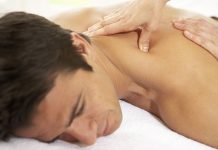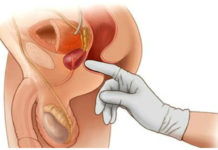Massage is considered to be a relaxing procedure. But some types of manual procedures have healing potential that brings the body health and youth. The use of lymphatic drainage technology provides unique results in the treatment of many diseases. The main thing is to take into account contraindications and indications for lymphatic drainage massage.
Material Content:
What is lymphatic drainage massage?
The lymphatic system is an important component of the cardiovascular system. Lymph circulates in the vessels and capillaries of the lymphatic system - a transparent fluid formed from the intercellular fluid, which many people know by the popular name of “sucrose”.
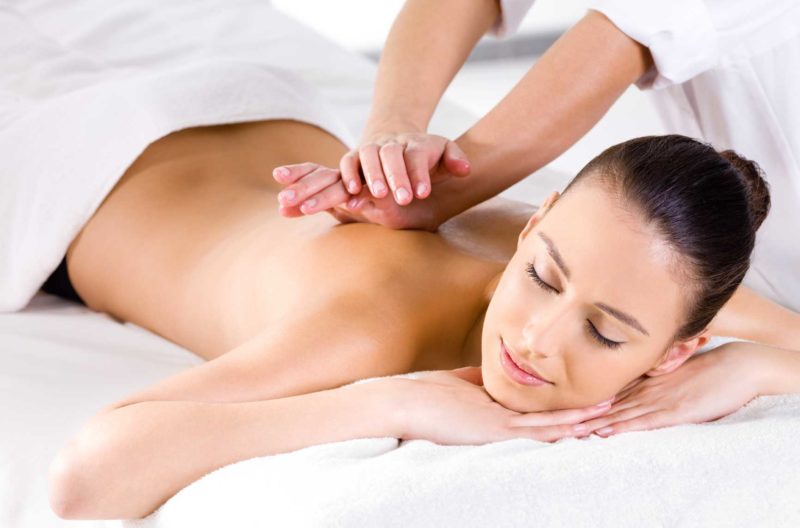
The main task of lymph is the transfer of immune cells and the support of immunity. In addition, the lymphatic system takes part in metabolic processes, as well as the purification of cells and tissues from toxins and harmful substances.
Features of the functions of the lymphatic system
Stimulation of the lymph flow and restoration of venous circulation is performed through physiotherapeutic procedures. From a medical point of view, lymphatic drainage is the most effective way of influencing the entire lymphatic system.
Unlike the circulatory, the lymphatic system does not have a pump, so the lymph movement is slow and accelerates only due to muscle contraction.
Thus, the effect on the muscles through lymphatic drainage massage stimulates the functionality of the lymphatic system:
- the connection between tissues and blood flow;
- creation of immunity;
- protection against viral and microbial lesions;
- ensuring a normal concentration of urine;
- transfer of substances obtained during digestion;
- transportation of certain enzymes and red blood cells into the bloodstream;
- maintaining a stable level of the cellular microenvironment.
With the help of lymphatic drainage massage, metabolic processes between lymph and cells improve, respectively, the removal of toxins and toxins from the body becomes more intense.
To achieve the maximum effect, lymphatic drainage massage is combined with a relaxing classic massage - elimination of muscle spasms can increase blood flow and increase the overall therapeutic effect.
The benefits of massage
Deterioration of the lymphatic system is accompanied by a number of signs that patients often do not pay attention to:
- the appearance of edema due to insufficient outflow of lymph;
- a sharp increase or decrease in weight;
- diseases of the venous system, the development of thrombophlebitis.
All these health disorders are the result of the accumulation of toxins and harmful substances that are no longer removed by the lymphatic system. Pathologies can be eliminated if the natural intensity of the lymph flow is restored. Better yet, speed it up with lymphatic drainage massage.
Lymphatic drainage technology is based on knowledge of the location of lymph nodes and the specificity of lymph flow. The correct sequence of action on the lymph nodes by pressing and stroking allows you to restore and activate many physiological processes of the body, without which it is impossible to fully recover when:
- puffiness of the skin;
- increase in pressure;
- violation of the turgor of the epidermis in the face and body;
- the formation of postoperative scars, scars from burns and postpartum stretch marks;
- decreased metabolism;
- excess body fat and cellulite;
- weakened immunity;
- varicose veins in the initial stage.
Besides, lymphatic drainage allows you to adjust the figure and slows down the aging process, therefore, it refers to popular cosmetic procedures.
Contraindications to lymphatic drainage massage
Since the result of lymphatic drainage massage is reflected in the work of most internal organs and systems, the effect of the procedure can cause undesirable processes in some diseases.
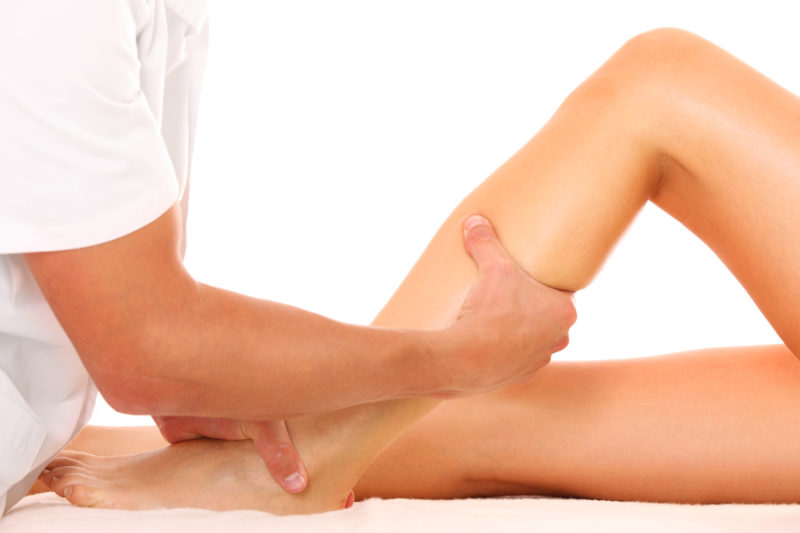
The main contraindications to lymphatic drainage therapy are:
- skin diseases or injuries - fungus, psoriasis, neurodermatitis and eczema, cuts, bruises;
- diabetes;
- cirrhosis of the liver;
- insufficient elasticity of the walls of blood vessels;
- inflammatory processes in the area of lymph nodes;
- viral or bacterial infections;
- pathology of the heart muscle;
- thyroid dysfunction;
- oncological lesions;
- menstruation, pregnancy, lactation;
- allergic reactions;
- urinary dysfunction;
- thrombophlebitis, cerebral sclerosis;
- mental disorders;
- temperature rise.
Most of these contraindications are justified by the fact that an increase in the intensity of the lymph flow can contribute to the spread of pathogenic microorganisms, poisons, allergens, as well as tumor cells. Along with this, there is an increase in blood flow, creating an increased load on the organs of the cardiovascular and nervous system.
Active removal of toxins, as a result of lymphatic drainage, promotes the ingestion of harmful substances into breast milk and can negatively affect the health of the newborn.
For healthy people, lymphatic drainage procedures are not only not contraindicated, but also desirable, as they can improve well-being, improve health and rejuvenate the body.
Types and types
Lymphatic drainage massage is performed in two ways - manual and hardware.Manual procedures include the direct impact of the hands of a massage therapist on lymphatic drainage zones. Whereas the hardware procedures are carried out using special medical and cosmetology equipment.
Hardware lymph drainage
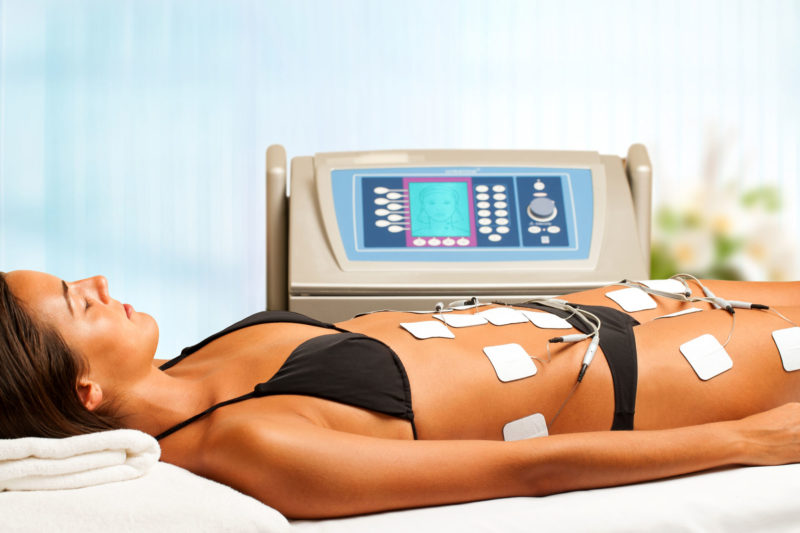
Hardware procedures differ in the way they affect the lymph flow and the type of equipment used:
- pressure therapy - the method of exposure to the body with compressed air. Before performing the procedure, the patient wears a special suit on the whole body or its individual parts. The principle of operation of the device is the same as in the cuff for measuring pressure - compressed air is pumped into the cavity of the suit and acts on parts of the body. The pressure level is automatically controlled according to the program embedded in the computer;
- microcurrent drainage - stimulates the upper layers of the epidermis by exposure to low-frequency electric pulses. The procedure is completely painless and is performed using electrodes;
- electroionophoresis - Intensively removes toxic formations from the pores of the skin and at the same time moisturizes it. It is performed using electrodes, by introducing special substances with moisturizing, stimulating and nourishing properties into the skin. Increases skin tone, normalizes water balance, promotes resorption of scars and scars;
- vacuum lymphatic drainage. To perform the procedure, special vessels are installed on the patient’s body through which reduced pressure enters. Under its influence, excess fluid is removed from the body to the outside;
- endermology - the procedure is performed using a vacuum roller machine by acting on the lymphatic vessels along the lymphatic current. Improves the condition of tissues, stimulates areas with congestion.
All of these methods provide a stable result - accelerating metabolism, removing excess fluid containing toxins and slags.
Specificity of lymphatic drainage techniques by type of exposure
Each of the lymphatic drainage technologies pursues a health-improving goal - removing puffiness, body shaping, eliminating cellulite, lowering the level of subcutaneous fat, and improving the condition of the skin.
To get the desired result, doctors use various methods - depending on the area of the body on which lymphatic drainage massage is performed.
Anti-cellulite
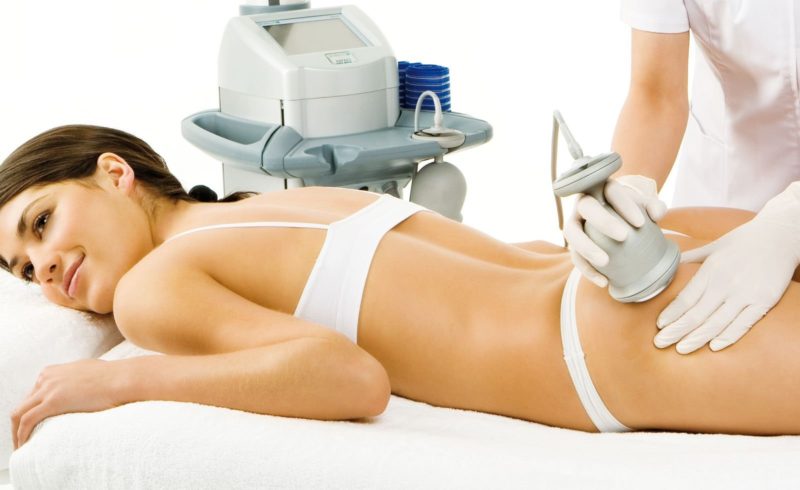
The technique is designed to combat hypertrophy of body fat. It removes toxins and excess fluid, improves blood circulation in areas with cellulite, restores the natural level of microcirculation in tissues. It is carried out alternately in each of the problem areas.
Decongestant
The masseur applies soft, smoothly sliding movements - rubbing and stroking. If necessary, more intensive methods of exposure are used - the technique allows you to use the deep layers of the muscles.
The technique is relevant for use in anti-cellulite programs, with the goal of preventing varicose veins, and also as a means of relaxation.
Lipolytic
Provides effective reduction of the subcutaneous fat layer of fiber, is an important component of anti-cellulite programs. The use of technology is possible only in the absence of edematous phenomena, therefore, lipolytic lymphatic drainage is performed immediately after sessions that eliminate lymph stasis.
Modeling
A technique that allows you to adjust the figure by affecting specific problem areas. The degree of impact intensity is determined by the specialist, according to individual indicators of the patient's condition.
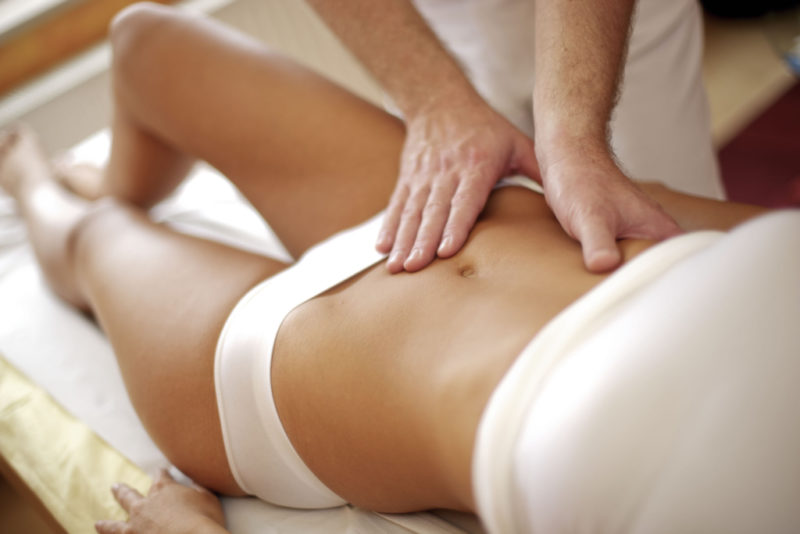
The use of technology brings comfort and pleasant sensations, while reducing the fat layer and stimulating the withdrawal of fluid.
Lifting
One of the most effective techniques for improving the condition of skin that has lost tone due to weight loss or pregnancy. It enhances the production of collagen, due to which it stops the aging of the skin and prevents the appearance of new wrinkles.
Manual lymphatic drainage massage
The manual lymphatic drainage massage procedure involves the use of techniques with different levels of exposure:
- surface - improves the condition of small vessels and capillaries, increases the intensity of metabolic processes. It is performed in circular motions with a slight pressure on the fabric. The optimal result is achieved after applying techniques that relieve tension and relax muscles;
- deep - provides for intensive massaging of muscle tissue. Expands blood vessels, enhancing blood flow, increases muscle tone. It is used to reduce volume in the hips and buttocks;
- point - therapy in the field of projections of the lymph nodes.
Manual and hardware types of lymphatic drainage massage can be used in combination, as techniques that complement each other.
Stages of manual massage
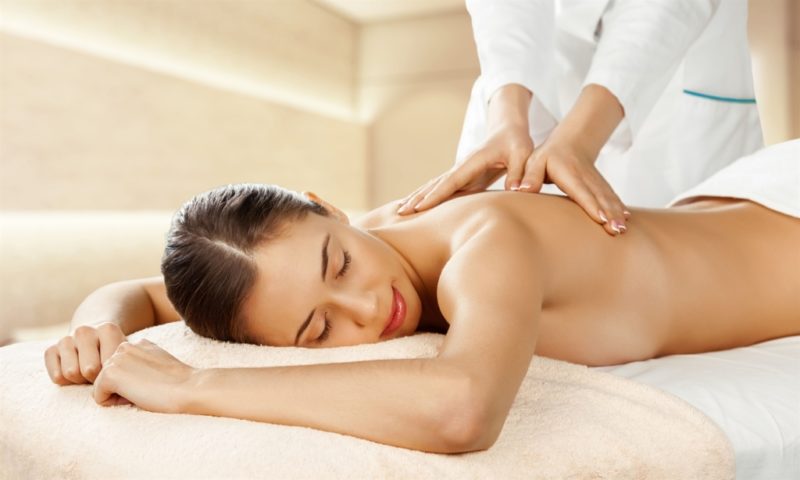
Manual lymphatic drainage massage can have a preventive or therapeutic value. Despite the fact that the course of lymphatic drainage massage is prescribed in accordance with the individual indicators of the patient, the main stages of each session remain unchanged:
- preparatory. Before starting the session, the patient is recommended to take a shower and drink a glass of still water. The masseur removes dirt from the patient's skin and applies a special cream or gel. To perform some treatment programs, massage therapists use honey and aromatic oils;
- main. Any session should begin with exposure to the lymph nodes. Subsequent passes are performed along the lymphatic flow and towards the nearest lymph nodes. The main rule of massaging is slow and careful movements from the bottom up;
- final. Cleansing the skin of the remnants of a massage cream, applying moisturizing cosmetics. Some time after the session (at least 10 minutes), the patient is recommended to be at rest, and abide by the regimen of abundant water intake.
To achieve the optimal healing result of lymphatic drainage massage, the patient should refuse to take alcoholic beverages and smoke throughout the course. In addition, it is advisable to avoid consuming large amounts of food and drinks in the evening.
What parts of the body can be massaged
To restore the functionality of the lymphatic system and the health of the body as a whole, the object of lymphatic drainage therapy can be the face, neck and back, buttocks and legs, as well as the stomach and arms.

Lymph nodes filtering lymph are located throughout the human body. But most of them are in the face and neck. Therefore, manual therapy of these sites is considered the most effective.
Face lymph drainage technique
In the face, the lymph vessels are located in the center and connect to the lymph nodes that are in the temporal zone, as well as under the jaw and chin. A herbal bath for the skin of the face before the session will provide the best result of the procedure.
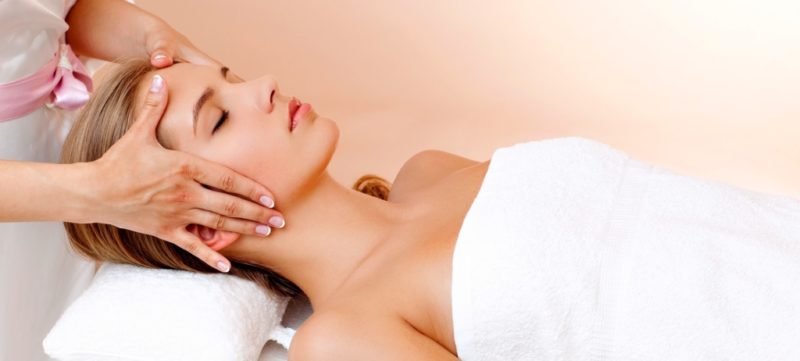
Lymphatic drainage facial massage is performed with fingertips, slow light touches from the center to the temples:
- massage of the frontal zone;
- nose bridge - at the bottom of the orbits;
- eyelid zone - alternately touching the upper and lower eyelids when moving to the temples;
- nasolabial fold - soft movement with the index fingers from the center to the side, to the lymph nodes on the sides of the lower jaw;
- chin - with minor taps, a line is drawn along the edge of the lower jaw, from the center to the sides;
- transition to the neck - with gentle strokes down.
The result of the procedure is an improvement in the facial contour, elimination of bags and bruises under the eyes, smoothing of facial wrinkles, elimination of the second chin, smoothing of nasolabial folds, uniform and healthy complexion.
The optimal course of lymphatic drainage facial massage is 10-12 sessions with a duration of 20-40 minutes.
Read also: lymphatic drainage facial massage
Lymphatic drainage massage technique
For lymphatic drainage massage in the neck, shoulders of the abdomen and back, you need to preheat problem areas and perform a classic relaxing procedure.
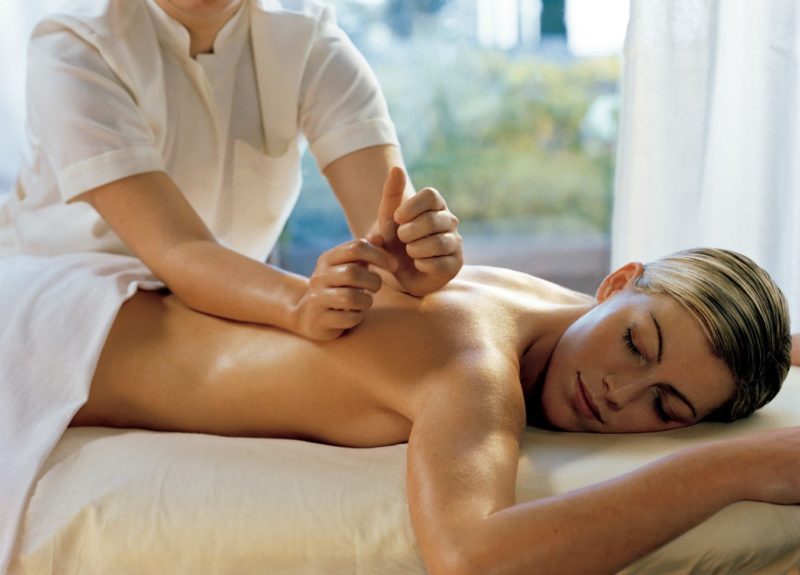
In the neck area there are clusters of lymph nodes collecting lymph from the entire body, so it is important that manual lymphatic drainage massage is performed by a professional manual.
Manual buttock therapy is performed in circular movements and lightly tapping the edge of the palm of the hand.
Back massage should be done in the direction from the spine to the sides, gradually moving from the shoulder to the lower back and sacral.
Abdominal massage is the best way to improve tissue of the peritoneal organs, tighten the skin, reduce the amount of adipose tissue, restore normal metabolism, and also improve the result of a weight loss program.
The procedure begins on the right side of the abdomen in a direction from the bottom up. Then, with your fingers, stroke the skin around the navel clockwise. The end of the session - light tapping on the entire surface of the abdomen.
Body lymph drainage may require from 8 to 20 procedures - twice a week for a duration of 2 hours.
Even one session of lymphatic drainage massage of the body per week allows you to normalize the work of internal organs and prevent the development of lymphostasis.
Technique of lymphatic drainage foot massage
Lymph congestion in the legs is the result of a sedentary lifestyle. Lymphatic drainage therapy of the legs allows you to normalize the condition of the venous valves, eliminate swelling and muscle soreness, as well as prevent vascular spasms and the development of varicose veins.
The procedure can be performed independently:
- to remove the load from the muscles, you need to sit on the sofa, and stretch the leg in front of you and put on a chair;
- muscle warming is the key to a successful massage. Before distilling lymph to the lymph nodes located in the popliteal areas, it is necessary to slightly rub the toes of the feet;
- with slow strokes of the fingertips, we move from the ankles to the knees, then to the hips, affecting both the inside and the outside;
- the intensity of passes as you move can be increased, and instead of stroking apply light pats;
- to direct the lymph to the inguinal lymph nodes, stroking is necessary in the direction from the inside of the thighs up.
The course of lymphatic drainage foot massage includes from 6 to 15 sessions.
The procedure for manual lymphatic drainage is considered universal and is allowed for use at home. Nevertheless, in order to achieve an effective and lasting result, it is better to turn to a professional practicing manual - this is the best way to not only maintain health, but also significantly improve it.



